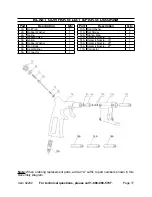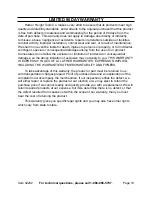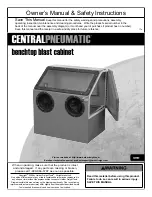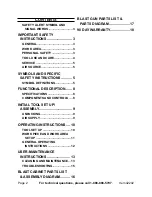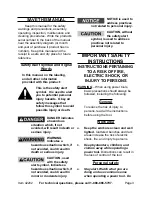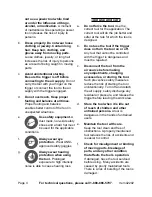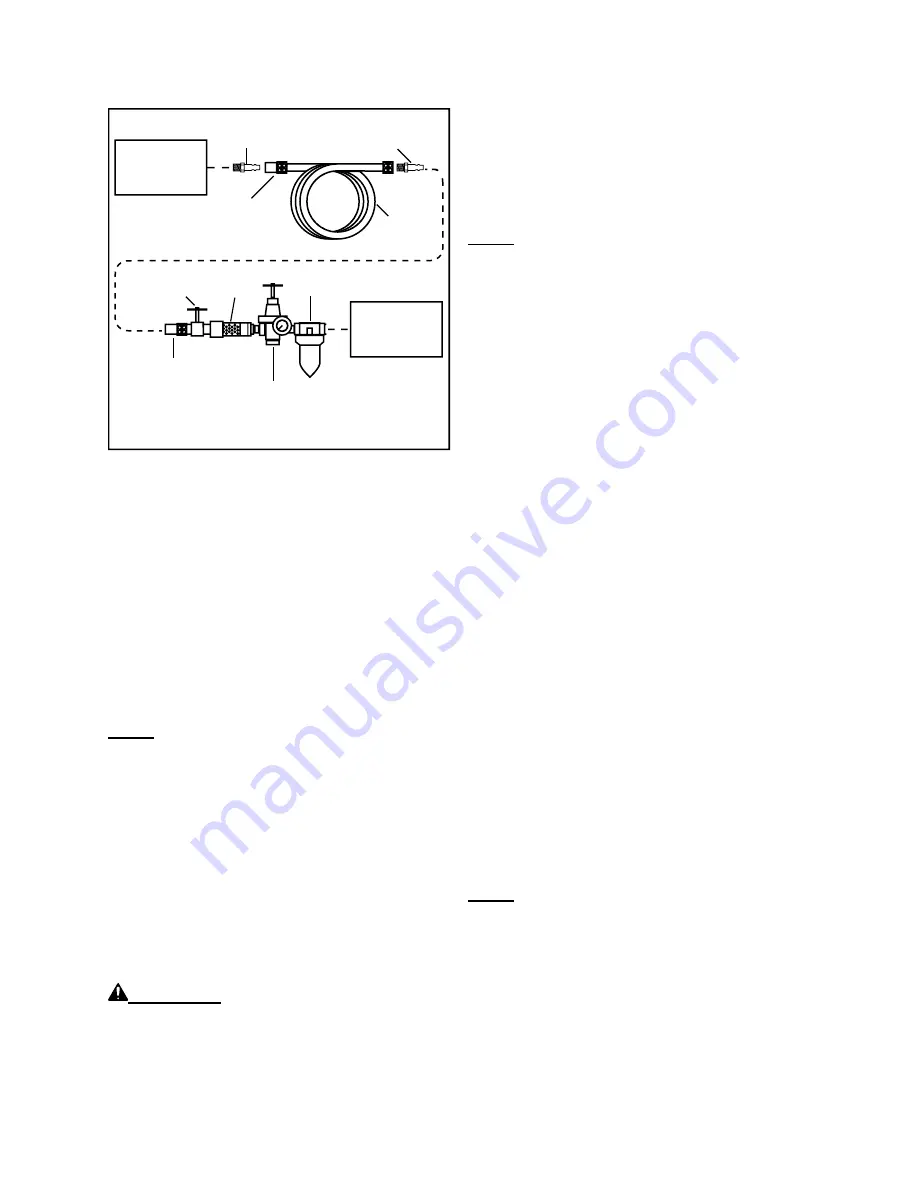
Page 9
For technical questions, please call 1-888-866-5797.
Item 42202
Quick
Coupler
Dryer
Recommended Air Line Components
Regulator with
Pressure Gauge
Quick
Coupler
Air Hose
on Reel
Valve
Filter
Coupler
Plug
Tool
Air
Compressor
Coupler
Plug
1.
Incorporate a filter, regulator with
pressure gauge, dryer, in-line shutoff
valve, and quick coupler for best
service, as shown in the diagram
above.
An in-line shutoff ball
valve is an important safety device
because it controls the air supply
even if the air hose is ruptured.
The shutoff valve should be a ball
valve because it can be closed
quickly.
Note:
An oiler system should not be used
with this tool. The oil will mix with
the material being propelled, causing
poor results.
2.
To test the unit, attach an air hose to
the compressor’s air outlet. Connect
the air hose to the air inlet of the tool.
Other components, such as a coupler
plug and quick coupler, will make
operation more efficient, but are not
required.
WARNING! TO PREVENT SERIOUS
INJURY FROM ACCIDENTAL
OPERATION:
Do not install a female quick
coupler on the tool.
Such a coupler
contains an air valve that will allow
the air tool to retain pressure and
operate accidentally after the air
supply is disconnected.
Note:
Air flow, and therefore tool
performance, can be hindered by
undersized air supply components.
3.
Close the in-line safety valve between
the compressor and the tool.
4.
Make sure the Trigger of the Blast
Gun (7) is not engaged.
5.
Turn on the air compressor according
to the manufacturer’s directions and
allow it to build up pressure until it
cycles off.
6.
Adjust the air compressor’s output
regulator so that the air output is
enough to properly power the tool,
but the output will not exceed the
tool’s maximum air pressure at any
time. Adjust the pressure gradually,
until the desired pressure is reached.
7.
Inspect the air connections for leaks.
Repair any leaks found.
8.
Turn off and detach the air supply,
safely discharge any residual air
pressure, and release the throttle
and/or turn the switch to its off
position to prevent accidental
operation.
Note:
Residual air pressure should not be
present after the tool is disconnected
from the air supply. However, it is a
good safety measure to attempt to
discharge the tool in a safe fashion
after disconnecting to ensure that the
tool is disconnected and unpowered.

















